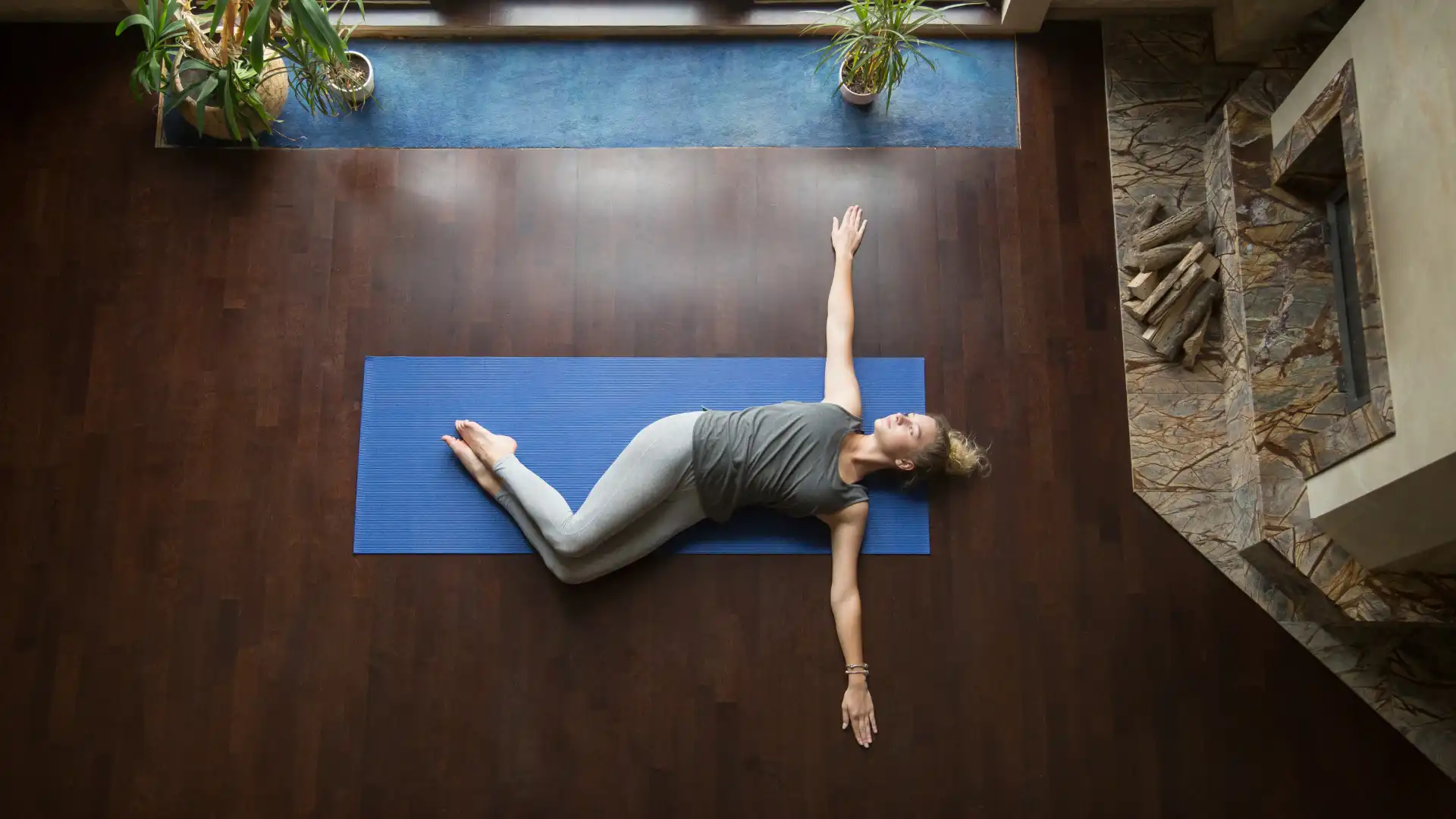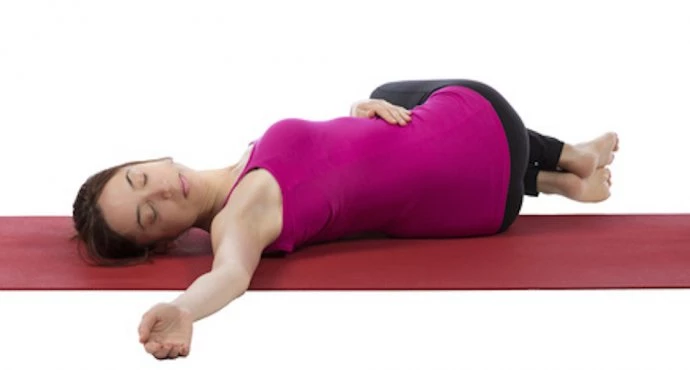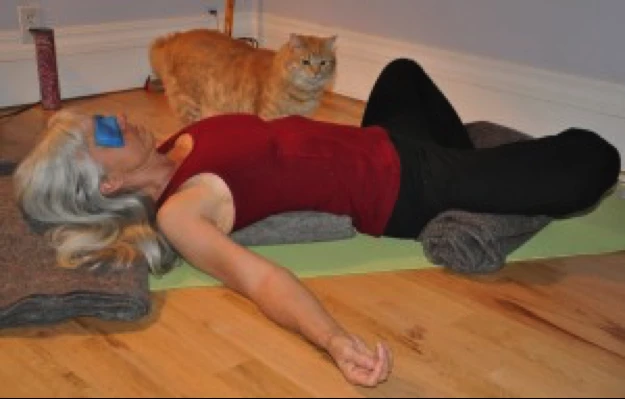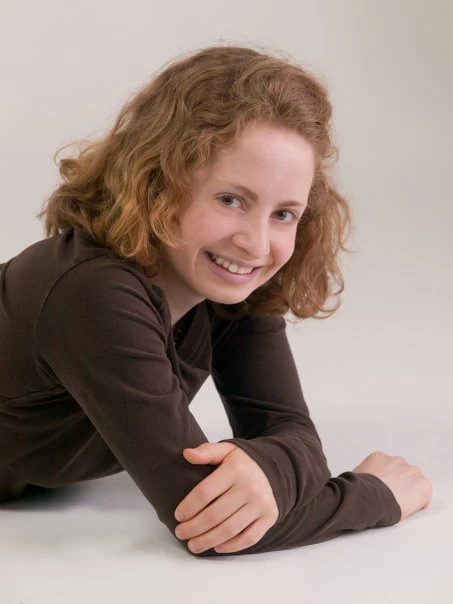I’m Here for Savasana: Finding Savasana in Other Yoga Poses

We’ve all seen the t-shirts: “I’m here for Savasana.” The statement is meant to be fun and tongue-in-cheek. In all seriousness, we can find the qualities of Savasana (Corpse Pose), in the poses leading up to it. Through that, we can gradually wind down practice in a gentler, softer, and more restful way. This approach can create a more satisfying experience of Savasana, and thus of practice overall.
Underlying that, it can facilitate the process that we intend to happen in Savasana—letting the effects of the practice seeping into the mind, body, and spirit. It’s as if one’s whole human system can pause and say, “Whoa, now what was that?” Savasana is a time for the answer to come. In fact, ancient yogis began asana practice as a means to end, to achieve the physical flexibility, strength, aerobic capacity, and steadiness to sit and execute pranayama, and then in meditation, for extended periods of time. A healthier, fuller life could follow.
We can return to this intended development of yoga practice through practicing asana in ways that prepare us for physical, mental, and spiritual stillness and calm. “I’m here for Savasana.” You know, the statement might really be onto something! Read on for how to work toward this progression in finding a little bit of that Savasana feeling in three poses that often lead up to it. Om Shanti!
3 Poses for Practicing Savasana (That Aren’t Actually Savasana)
Props needed: a mat, blanket, and two blocks
Salamba Setu Bandha Sarvangasana (Supported Bridge Pose)
This pose is a mild backbend and thus has a mild energizing effect. Yet we can relax all the body parts that don’t need to be working here—all of them, really—and thus join the qualities of energy and calm.
- Make sure one block is within reaching distance. Lying on your mat with bent knees, plant your feet hip-distance apart. Place your ankles just a tiny bit past your knees. A cue for this, for many people, is to graze your heels with your fingers. But for those with proportionally longer torsos or shorter arms relative to their legs, a better cue is to suggest placing your feet a bit farther out from the tailbone.
- Lift your hips just enough so that you can slide a block underneath your sacrum. Turn the block so that one of its wide sides supports the entire sacroiliac (SI) joint. Rest your hips back down so that the block is supporting your SI joint. Let that feeling of support begin to ripple all throughout you.
- Soften everywhere, from your face to your feet. Feel your shoulders melting into your mat, and the muscles of your legs resting on their bones.
- Listen to your smooth, steady breathing rhythm. Perhaps it slows down. Perhaps, as in Savasana, it becomes more gentle and less apparent, as your body doesn’t need the amount of oxygen it might in the midst of a Vinyasa sequence.
- Let yourself savor that difference, holding the pose for at least 10 feel breaths.
Jathara Parivartanasana (Revolved Belly Pose) 
This pose has all the advantages of more vigorous standing and seated twists, yet without the physical “work.” Once you set it up, it does the intended job. The support of the mat allows you to melt into the pose as you relax.
- From Supported Bridge Pose, lift your hips enough to take the block out from underneath you, placing it within reaching distance. Let your hips release back down to your mat.
- Shift your hips a little over to the right, to keep your spine aligned within the upcoming twist. Let your knees drop over toward your left (with the direction waste moves through the colon, it’s best to twist your torso to the right first).
- If there’s any feeling of compression or discomfort at your knees or ankles, or if any of those areas are floating more than a small amount above your mat, support them with blocks or a blanket. It can also feel nice to place a block or blanket between your knees, offering support and space for the low back, sacrum, and thighs.
- Once you set this pose up, no muscular “work” need be done, so that can you begin to let your whole body release muscular tension. Can your eyes soften into their sockets, and your shoulders into theirs? Can you let your shoulderblades melt down your back, and your belly soften to fully allow for the twist? Just as in the final rest, into which you are soon heading, your mat and props are here to fully support you, so let yourself be supported.
- Hold this pose for at least 10 full breaths. Then take the twist to the other side, starting with shifting your hips to the left, and adjusting any props to remain as supported as possible.
Supta Baddha Konasana (Supine Bound Angle Pose or Tailor’s Pose) 
A seasoned tailor at his/her work is energized and meticulous, yet cool, composed and calm. Supta Baddha Konasana opens up space for energy to flow, while support from props allows you to relax completely. Thus, it’s a great step into Savasana.
- Keeping your back resting on your mat after Revolved Belly Pose, bring your knees back up to the sky and your pelvis back to center (planting your feet and lifting them an inch, then dropping them back to your mat again, if necessary).
- Place the bottoms of your feet together and let your knees fall out to the sides. Place one block under each of your lower thighs, just about above your knees. Place a folded blanket over your torso; a sense of weight there can be very relaxing. (photo right set up with blankets for support)
- Come back to your breath, not forcing anything, but observing it gradually ease, its consistent rhythm becoming gradually slower. Feel your whole body softening more and more with each breath. Maintain softening on your inhalations, and find just a bit more release on your exhalations.
- Feel the release through your backside gradually seeping up through your frontside. Let your whole body melt into the support available to it. Notice if your heart, mind, and spirit can feel supported in the same way. Know that there is nothing you need to do right here, and right now, but breathe and be—and that’s enough.
- Take at least 10 full cycles of breath here, then head into your final resting pose, Savasana, (extending your legs long and taking your feet to almost as wide as your mat, to be able to take up space and feel fully expansive). Or if you feel completely supported and restful in Supta Baddha Konasana, take your final rest here for as long as you are able, and for as long as your body, mind, and spirit need.
Study lifelong knee health with YogaUOnline and Doug Keller – Yoga For Healthy Knees: Keys To Retaining Lifelong Mobility.
 Kathryn Boland is an RCYT and R-DMT (Registered Dance/Movement Therapist). She is originally from Rhode Island, attended The George Washington University (Washington, DC) for an undergraduate degree in Dance (where she first encountered yoga), and Lesley University for an MA in Clinical Mental Health Counseling, Expressive Therapies: Dance/Movement Therapy. She has taught yoga to diverse populations in varied locations. As a dancer, she has always loved to keep moving and flowing in practicing more active Vinyasa-style forms. Her interests have recently evolved to include Yin and therapeutic yoga, and aligning those forms with Laban Movement Analysis to serve the needs of various groups (such as Alzheimer’s Disease patients, children diagnosed with ADHD, PTSD-afflicted veterans – all of which are demographically expanding). She believes in finding the opportunity within every adversity, and doing all that she can to help others live with a bit more breath and flow!
Kathryn Boland is an RCYT and R-DMT (Registered Dance/Movement Therapist). She is originally from Rhode Island, attended The George Washington University (Washington, DC) for an undergraduate degree in Dance (where she first encountered yoga), and Lesley University for an MA in Clinical Mental Health Counseling, Expressive Therapies: Dance/Movement Therapy. She has taught yoga to diverse populations in varied locations. As a dancer, she has always loved to keep moving and flowing in practicing more active Vinyasa-style forms. Her interests have recently evolved to include Yin and therapeutic yoga, and aligning those forms with Laban Movement Analysis to serve the needs of various groups (such as Alzheimer’s Disease patients, children diagnosed with ADHD, PTSD-afflicted veterans – all of which are demographically expanding). She believes in finding the opportunity within every adversity, and doing all that she can to help others live with a bit more breath and flow!



